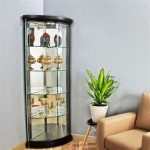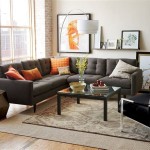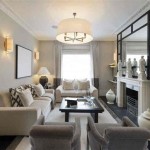Mirror Decoration in Living Room: Enhancing Space and Style
Mirrors are versatile decorative elements that can significantly impact the ambiance and visual appeal of a living room. They serve not only as reflective surfaces for personal grooming but also as strategic design tools to enhance light, create the illusion of space, and add aesthetic interest. The effective use of mirrors in a living room requires careful consideration of placement, size, style, and the surrounding décor. This article will explore the various ways in which mirrors can be incorporated into a living room to achieve optimal results.
Optimizing Light and Space with Mirror Placement
One of the primary benefits of using mirrors in a living room is their ability to amplify natural and artificial light. When positioned strategically, mirrors can reflect light from windows or lamps, effectively brightening the room and reducing the need for excessive artificial illumination. This is particularly useful in living rooms that receive limited natural light or have a darker color scheme.
To maximize light reflection, mirrors should be placed opposite or adjacent to windows. This placement captures the incoming sunlight and distributes it throughout the room. A large mirror positioned on a wall opposite a window can create the impression of a larger window, effectively doubling the amount of natural light entering the space.
In rooms with limited floor space, mirrors can create the illusion of a larger area. A large mirror placed on a wall can visually expand the room, making it feel more spacious and open. This technique is particularly effective in smaller living rooms where maximizing the perceived space is crucial. Furthermore, strategically placed smaller mirrors can also contribute to this effect by reflecting different angles and creating a sense of depth.
The height at which a mirror is hung is also a critical factor. A mirror hung at eye level will provide the most practical use while also creating a focal point. In contrast, a taller mirror, particularly a floor-length mirror, can create a more dramatic effect and enhance the vertical dimension of the room.
Selecting the Right Mirror Style and Size
The style of mirror chosen should complement the overall aesthetic of the living room. Mirrors are available in a wide range of styles, from ornate and traditional to sleek and modern. The selection should align with the existing furniture, color palette, and architectural features of the room.
For a traditional living room, a mirror with an ornate frame, perhaps made of wood or metal with intricate detailing, would be a suitable choice. These types of mirrors often feature antique finishes or embellishments that enhance their classic appeal. Conversely, a modern living room would benefit from a mirror with a minimalist design, such as a frameless mirror or one with a simple metal frame. These mirrors typically feature clean lines and a sleek aesthetic that complements contemporary décor.
The size of the mirror should be proportional to the wall on which it is placed and the overall size of the living room. A large mirror can make a statement and serve as a focal point, while smaller mirrors can be used to accent specific areas or create a gallery wall effect. A common mistake is to choose a mirror that is too small for the space, which can result in it appearing insignificant and out of proportion.
Consider the shape of the mirror as well. Rectangular mirrors are versatile and can be used in various settings, while round or oval mirrors can soften the lines of a room and add a touch of elegance. A grouping of smaller, differently shaped mirrors can create a unique and visually interesting display.
Incorporating Mirrors into Decorative Schemes
Mirrors can be seamlessly integrated into various decorative schemes to enhance the overall aesthetic of the living room. They can be used to create focal points, complement existing artwork, and add visual interest to otherwise plain walls.
A large mirror can serve as a focal point above a fireplace or sofa. This placement draws the eye and creates a sense of balance in the room. The mirror can be further enhanced by surrounding it with decorative elements such as sconces, artwork, or plants. The reflection of these elements in the mirror adds depth and dimension to the space.
Mirrors can also be used to complement existing artwork. Placing a mirror near a painting or sculpture can reflect the artwork, effectively doubling its visual impact. This technique is particularly effective in rooms with limited wall space or a curated collection of art. Ensure that the mirror's frame and style complement the artwork's aesthetic for a cohesive look.
Creating a gallery wall with mirrors is another way to incorporate them into the decorative scheme. A gallery wall typically consists of a collection of framed artwork, photographs, and decorative objects arranged on a wall. Adding mirrors of varying sizes and shapes to this collection can create a dynamic and visually interesting display. The mirrors reflect light and add depth to the gallery wall, making it a focal point in the room.
Mirrors can also be used to enhance the appearance of furniture. Placing a mirror behind a console table or bar cart can reflect the items displayed on the surface, creating a sense of abundance and visual interest. This technique is particularly effective for showcasing decorative objects, such as vases, candles, or books.
Incorporate mirrored furniture pieces for a subtle yet impactful effect. Coffee tables with mirrored tops, console tables with mirrored accents, or even mirrored side tables can add a touch of glamour and sophistication to the living room. These pieces reflect light and create a sense of openness, making the room feel more spacious.
When using mirrors in a living room, it is essential to consider what the mirror will reflect. Avoid placing mirrors in such a way that they reflect clutter or unattractive views. Instead, focus on reflecting positive elements such as natural light, greenery, or interesting architectural features. A well-placed mirror can transform a living room from ordinary to extraordinary by enhancing its light, space, and style.
The choice of mirror frame material contributes significantly to the overall aesthetic. Wood frames offer a warm, natural look, while metal frames provide a sleek, modern feel. Painted frames can be customized to match the room's color scheme, adding a personalized touch. The frame's width and detailing should be proportionate to the mirror's size and the room's style. A wide, ornate frame can be overpowering in a small space, while a thin, minimalist frame might get lost in a large, elaborate room.
Regular maintenance is crucial to keep mirrors looking their best. Dust and fingerprints can detract from their reflective qualities. Cleaning mirrors with a soft cloth and a glass cleaner will ensure that they remain sparkling and contribute to the overall brightness of the living room. Avoid using abrasive cleaners, as they can scratch the surface of the mirror.
Ultimately, the successful integration of mirrors into a living room involves careful planning and attention to detail. By considering the placement, style, size, and surroundings, one can create a space that is both visually appealing and functionally enhanced. Mirrors are more than just reflective surfaces; they are powerful design tools that can transform the ambiance of a living room.

Living Room Wall Decor Ideas How To Display Art

Mirror Decoration Ideas For Living Room Doğtaş

How To Decorate Your Living Room With Mirrors Beautiful Homes

How To Make Your Room Look Larger With Mirrors Arcus Home Decor Inc

Living Room Decorating Ideas With Mirrors Ultimate Home

Wall Mirror Decor Ideas For A Glamorous Interior

Mirror Decoration Ideas For Living Room Doğtaş

Mirror Decoration For Home 15 Ideas To Decorate With Mirrors

Decorative Mirrors For Living Room To Brighten Your Home Interiors

Modern Wall Mirrors New Design Ideas For Unique Room Decor








